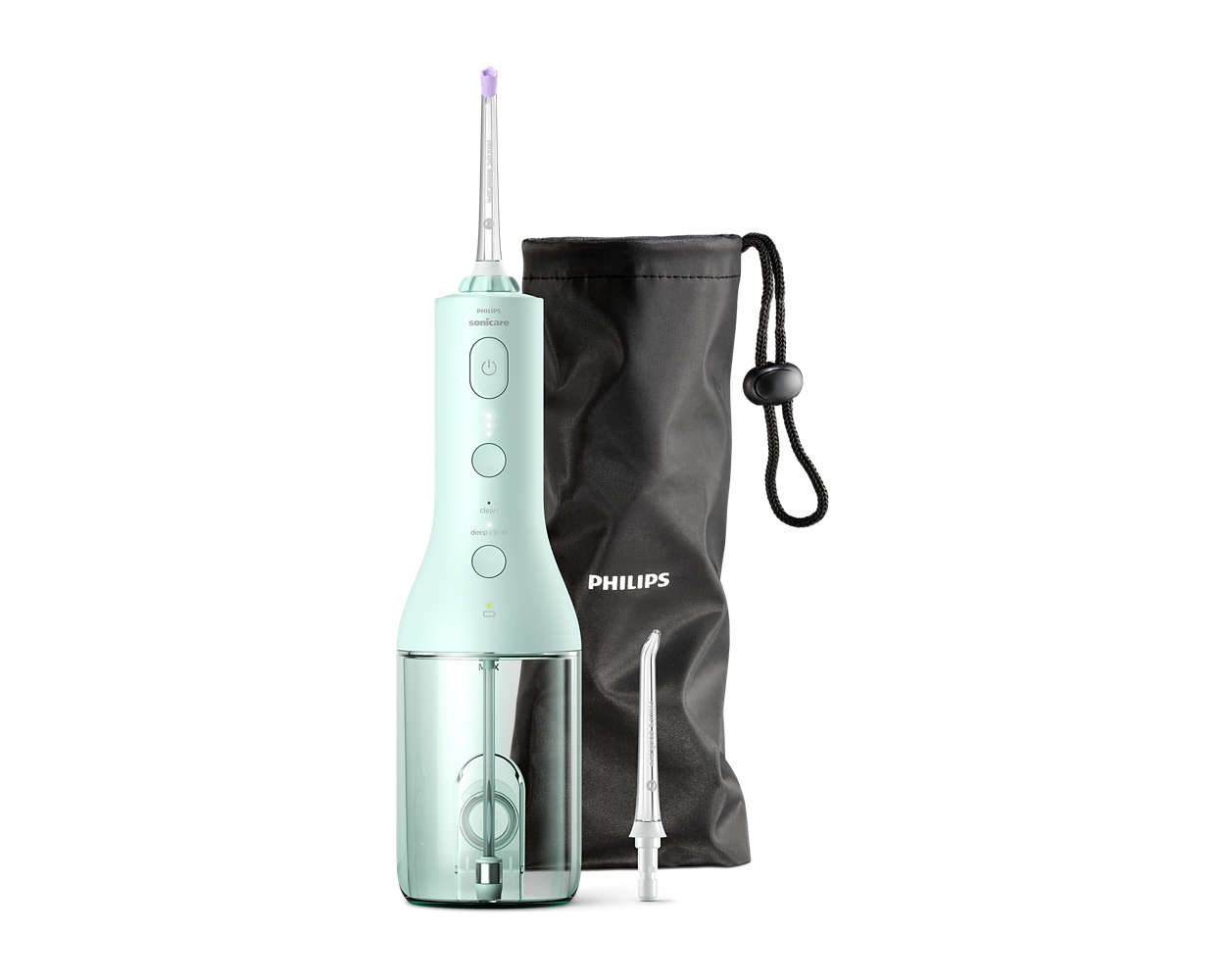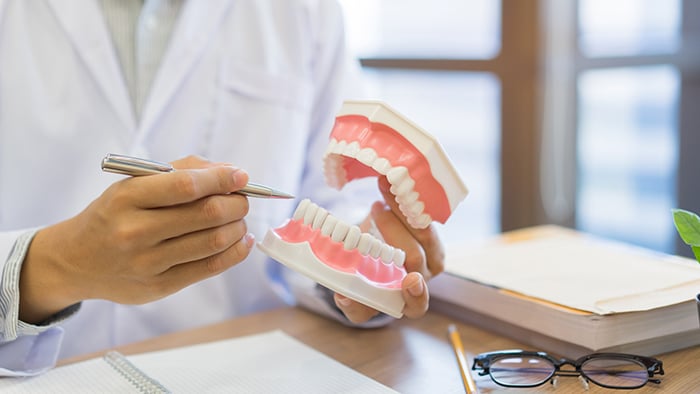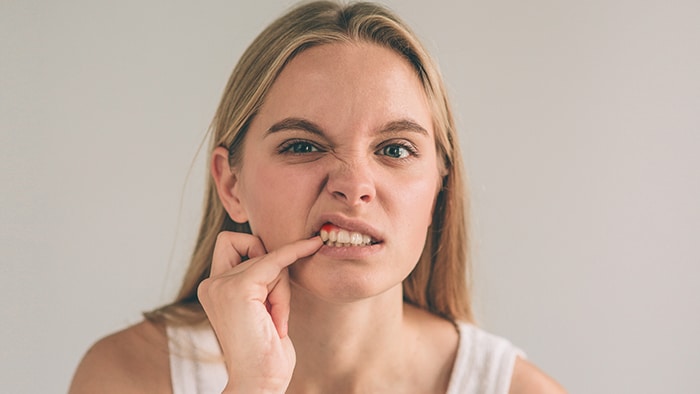How to Floss your Teeth and the Benefits of Flossing
Flossing should be straight-forward, but a lot of us forget this important step in our oral care routine or floss incorrectly.
Benefits of flossing
Flossing is one of the essential steps in any oral hygiene routine, but it’s one we tend to ignore. If you don’t floss, you’re only reaching up to 60% of your teeth’s surfaces. The remaining 40% is between the teeth and can only be reached with floss. It’s important to know how to floss so that you can keep your teeth healthy and clean.
Should you brush or floss first?
First, you need to know when to floss. There is a correct order when it comes to an oral hygiene routine, and flossing should come before brushing. Flossing removes plaque from between the teeth that your toothbrush can’t reach. Once that plaque is removed, your toothpaste can cover all your teeth, even between the teeth. The fluoride in toothpaste clings to tooth enamel and protects your teeth while you sleep, so you need to floss first so that the fluoride can protect between your teeth as well. Flouride also helps keep bad breath away so you can avoid waking up with morning breath. Once you’ve cleaned between your teeth, the toothpaste can get to work and do its job without being stopped by plaque. If you floss after you brush, you’ll remove the plaque, but you won’t create that protective fluoride layer in the gaps between the teeth. This can make it easier for more plaque and bacteria to return and settle in overnight.
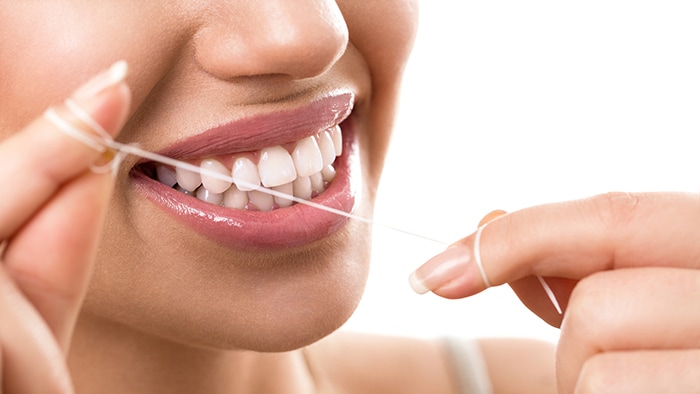
How to floss
The most common method of flossing is to use string floss and if you floss with dental floss string, you should follow these steps:
What you need
Philips Sonicare Cordless Power Flosser 3000
Oral Irrigator
HX3806/34

- -{discount-value}
Philips Sonicare Cordless Power Flosser 3000 Oral Irrigator
HX3806/34Flossing reinvented with QuadStream technology
Effortlessly thorough cleaning between teeth to improve your gum health. Unique Quad Stream tip cleans more area with less effort for more effective flossing every time, so it's easy to get flossing right. See all benefits
Flossing reinvented with QuadStream technology
Effortlessly thorough cleaning between teeth to improve your gum health. Unique Quad Stream tip cleans more area with less effort for more effective flossing every time, so it's easy to get flossing right. See all benefits
Flossing reinvented with QuadStream technology
Effortlessly thorough cleaning between teeth to improve your gum health. Unique Quad Stream tip cleans more area with less effort for more effective flossing every time, so it's easy to get flossing right. See all benefits
Flossing reinvented with QuadStream technology
Effortlessly thorough cleaning between teeth to improve your gum health. Unique Quad Stream tip cleans more area with less effort for more effective flossing every time, so it's easy to get flossing right. See all benefits
Alternatives to flossing with string
Flossing with string isn’t the best option for everyone. Some people find it hard to floss the teeth further back in their mouths. Fortunately, there are other options available. Electric flossers produce a high level of pressure that removes the plaque beneath your teeth easily with the hand-held device. The Philips Sonicare AirFloss, for example, removes plaque with micro-droplet technology that combines powerful yet gentle bursts of air and water. Customisable burst settings also let you control how you floss, even when you’re not flossing manually. To use the Sonicare AirFloss, first fill the containment unit with water, place the nozzle in front of the space between two teeth and press the activation button to send bursts through your teeth, clearing plaque and debris. Relax your lips around the nozzle to prevent water from ricocheting away.
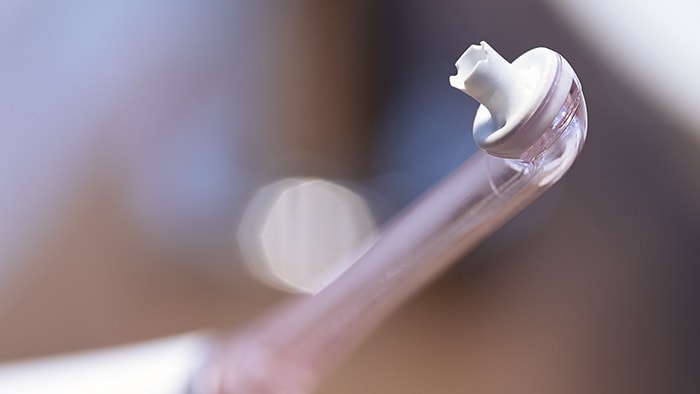
How to floss with braces?
Braces can make flossing a lot harder, but that doesn’t mean people with braces shouldn’t floss. Gliding the string floss up and down your teeth is still useful, but braces can prevent the string from reaching half your teeth. Specialty dental floss for braces can help—it comes in pre-cut strands with one firm end that you can feed between the teeth to access the area between the gum line and the braces wire. If you floss this way, you can follow the same steps as flossing without braces, you just need to do the top and bottom half of each tooth gap separately. Another option for flossing with braces is to use an electric flosser. It can blast the plaque from your teeth without braces being an issue at all. Having braces doesn’t mean you can’t floss.
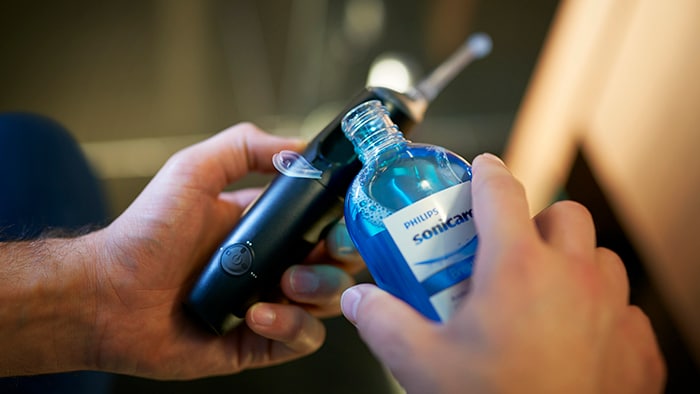
How often should you floss
Everyone should floss every day. You don’t have to floss as often as you brush your teeth, which is twice a day, but you should floss every evening before brushing your teeth and then heading off to bed. If you’re particularly prone to finding food debris in your teeth, flossing more than once a day is fine, just remember to be gentle on your gums. Flossing too much and too harshly could damage the gums. For the best results, use the right toothbrush for you, we recommend an electric toothbrush like the Philips Sonicare DiamondClean, in combination with your chosen floss.


